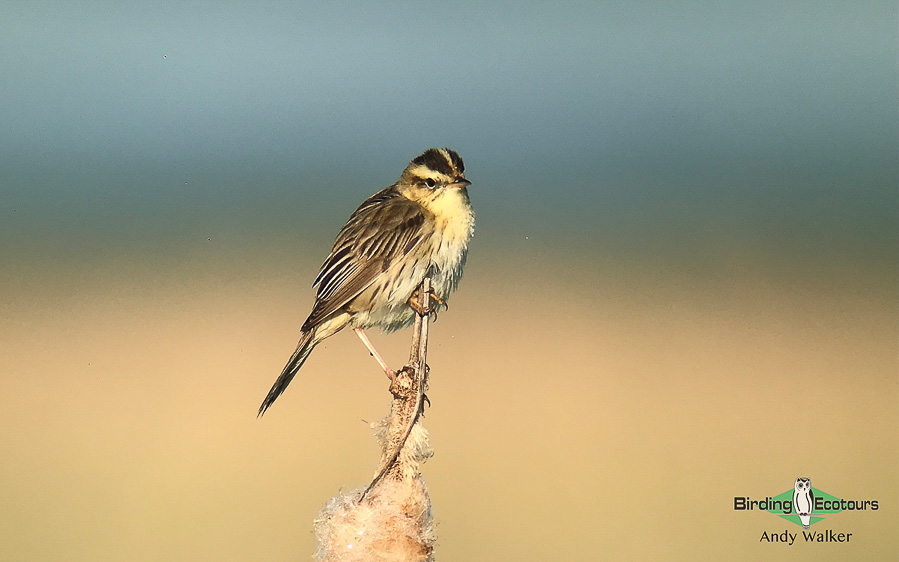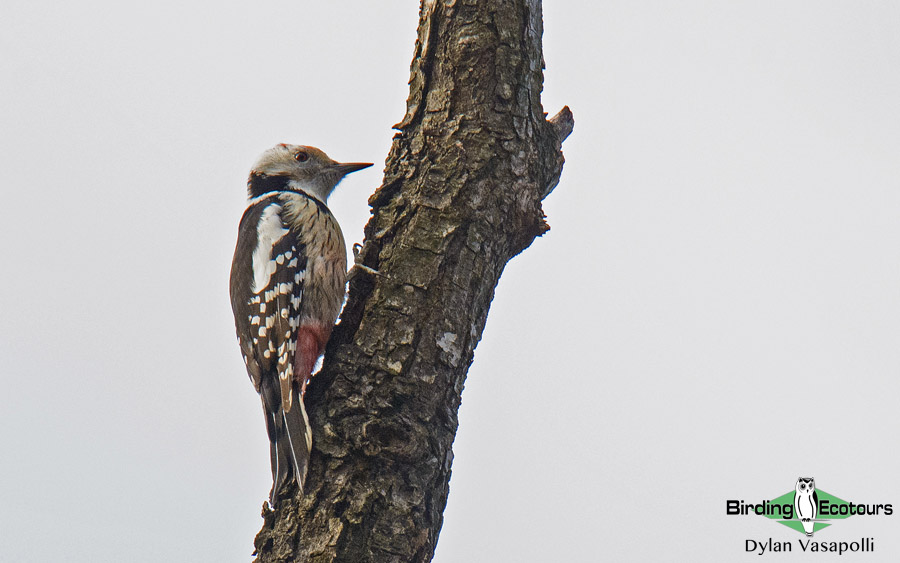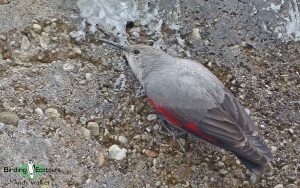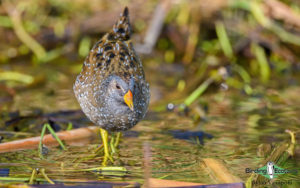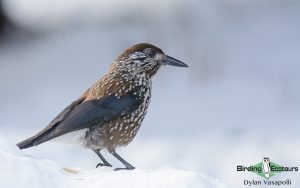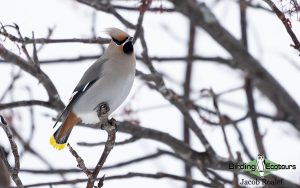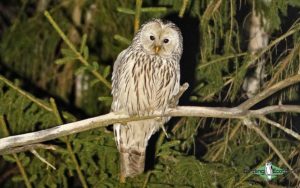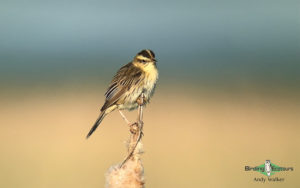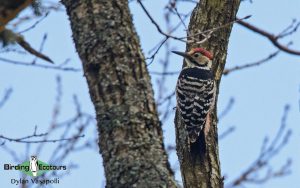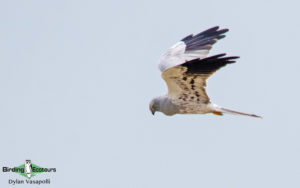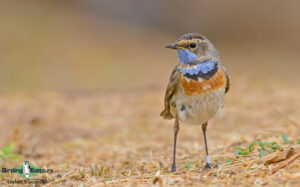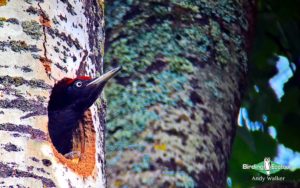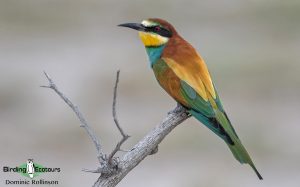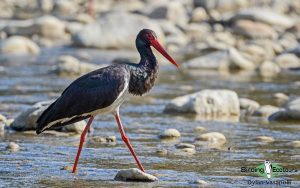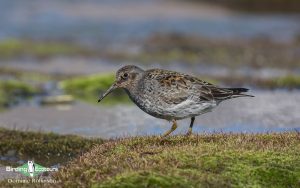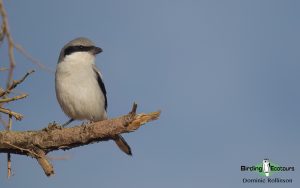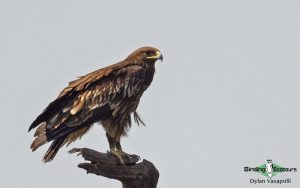Poland Birding Tours
The Republic of Poland (“Poland” hereafter) is a large country, the same size as the US state of New Mexico, in central Eastern Europe with a population of 38.5 million people. Its northern coastline is the Baltic Sea but on all other sides it is landlocked, sharing its borders with Germany, Czech Republic, Slovakia, Ukraine, Belarus, Lithuania, and Russia. Warsaw, the capital of Poland, sits just to the east of the center of the country and is home to around 3.1 million people.
Throughout history, Poland has been a prosperous country. The Kingdom of Poland was formed in 1025 and remained in place for the next 500 years. Poland’s growth and prosperity led to its joining with neighbors Lithuania to form the Polish-Lithuanian Commonwealth in 1569. This single nation became one of the largest and most populous nations in 16th and 17th century Europe, extending for 390,000 square miles (1,000,000 square kilometers) across the east of Europe. This did not last however, and from the 18th century onwards Poland became divided and conquered by many foreign powers including Prussia, Russia, Austria, and later Napoleon of France. In the 20th century Poland suffered greatly during both World War One and World War Two, perhaps more so than any other country in this period, and later from the Soviet Union. Poland joined the European Union in 2004.
Read More About Poland
Poland’s geography varies greatly across the country. The north and west of the country are part of the Northern European plain and are generally low-lying areas with large river valleys and marshes. A vast area of lakes in the northeast of the country leads into immense forests which cover the area around the border with Belarus, including the world famous Białowieża National Park. The south of the country is mostly mountainous with the Tatra Mountains (part of the Carpathian range) being the highest point. These mountains run along Poland’s border with Slovakia and are considered some of the most beautiful mountains in Europe. The summit of Rysy at 8,199 feet (2,499 meters) is Poland’s highest point. The climate of Poland is mostly temperate with warm to hot summers in lowland areas and very cold winters across the country.
Poland is one of the best countries for birding in Europe and it is one of our favorite destinations. Following International Ornithological Congress (IOC) taxonomy (v10.2 in December 2020) the bird list of Poland stands at 471 species, with 28 of these being globally threatened. Some of the most important species for foreign birdwatchers include Great Snipe and Aquatic Warbler – Poland is the best place in the world to see these rare birds, and Wallcreeper, a sought-after monotypic family, also breeds in the high mountains. Furthermore, Poland is one of the best countries to see the majority of European Woodpeckers. Poland has 175 Important Bird Areas (IBAs), sites identified by BirdLife International as having high value to birds. Our birdwatching holiday in Poland will take in some of these fantastic, bird rich areas, including Białowieża (Bialowieza) Forest, Biebrza River Valley, Siemianwóka Reservoir, Roztocze, and the Tatra Mountains (Tatrzański National Park).
We have two fantastic Poland birdwatching tours timed to provide optimum birding experiences in the country, each outlined below. We can also easily organize custom bird holidays here, so do get in touch.
Poland: Best of Eastern Europe
Our spring Poland tour features many great species, some highlights of this trip are summarized below. The excellent habitats of the Biebrza marshes and surrounding area hold Ferruginous Duck, European Turtle Dove, Corn Crake, Little Crake, Common Crane, Broad-billed Sandpiper, Temminck’s Stint, Great Snipe, Whiskered Tern, White-winged Tern, Black Stork, White Stork, and Little Bittern. Breeding passerines are also well represented here, and we will look for Great Reed Warbler, Aquatic Warbler, Marsh Warbler, Icterine Warbler, River Warbler, Savi’s Warbler, Barred Warbler, Eurasian Penduline Tit, Bluethroat, Citrine Wagtail, Common Rosefinch, and Ortolan Bunting. These marshes are also home to Eurasian Beaver, Moose (Elk), and Wild Boar.
In the forests and surrounding grasslands of western Poland we will search for Hazel Grouse, ten of Europe’s eleven woodpecker species, including Black Woodpecker, Syrian Woodpecker, Eurasian Three-toed Woodpecker, and White-backed Woodpecker, as well as other interesting species such as Red-backed Shrike, Eurasian Golden Oriole, Spotted Nutcracker, Thrush Nightingale, Red-breasted Flycatcher, and Collared Flycatcher. With luck, we may also have sightings of European Bison, Grey Wolf, Eurasian Lynx, and Wild Boar.
Birds of prey in the above forest and open habitats include Short-toed Snake Eagle, Lesser Spotted Eagle, Greater Spotted Eagle, Northern Goshawk, Montagu’s Harrier, White-tailed Eagle (Poland’s national bird), Red-footed Falcon, and Eurasian Hobby. We will also search suitable habitat for owl species such as Ural Owl, Eurasian Pygmy Owl, and Short-eared Owl.
Finally, in the Carpathian Mountains we will hope to come across a totally different suite of birds including Wallcreeper, European Honey Buzzard, Golden Eagle, Common Firecrest, Ring Ouzel, White-throated Dipper, Alpine Accentor, Water Pipit, Hawfinch, and many more species. These mountains are also home to some of Europe’s iconic mammals and herptiles (reptiles and amphibians). While nothing is guaranteed, with luck, we may come across European Bison, Grey Wolf, (European) Brown Bear, Eurasian Lynx, European Wild Cat, Northern Chamois, Speckled Ground Squirrel, Fire Salamander, and Aesculapian Ratsnake (Europe’s largest snake).
Poland: Birding the Baltic Coast and East in Fall
Our fall tour of Poland will see us enjoy the best the east of the country has to offer. Here we will explore the ancient forests and marshlands that are home to fascinating birds. We then move up to the Baltic Sea coast. This will see us come face to face with migration at its best, as vast numbers of seabirds, wildfowl, and shorebirds (waders) move through the area. On land, the bushes and trees will be teeming with migrant passerines and other exciting species.
Key species for this tour include Hazel Grouse, Spotted Nutcracker, six woodpecker species including Eurasian Three-toed Woodpecker and White-backed Woodpecker, Common Crane, waterbirds including Common Pochard, Smew, Velvet Scoter, Tundra Bean Goose, Black-throated Loon (Diver), and Horned (Slavonian) Grebe, shorebirds like Spotted Redshank, Purple Sandpiper, and Jack Snipe, birds of prey ranging from the massive White-tailed Eagle to the rare Greater Spotted Eagle, owls including Eurasian Eagle-Owl and Eurasian Pygmy Owl, plus a range of passerines including European Crested Tit, Great Grey Shrike, Willow Tit, Brambling, Twite, Bohemian Waxwing, and rarities like Red-throated Pipit, Yellow-browed Warbler, and Pallas’s Leaf Warbler.
Download Poland Itineraries
Poland: Best of Eastern Europe
Poland: Birding the Baltic Coast & East in Fall
